For decades, schoolchildren from around the metropolitan region made the annual field trip to the Kansas City Museum. I remember visiting during the time that it focused primarily on our hometown’s history. It also featured hundreds of taxidermized animals in lifelike settings. In 2008, the museum was closed for a complete renovation and repurposing. When we heard it had reopened, we were eager to see the renewed purpose of this Kansas City landmark. Located at 3218 Gladstone Boulevard, this FREE attraction is a good choice for a day of exploring.
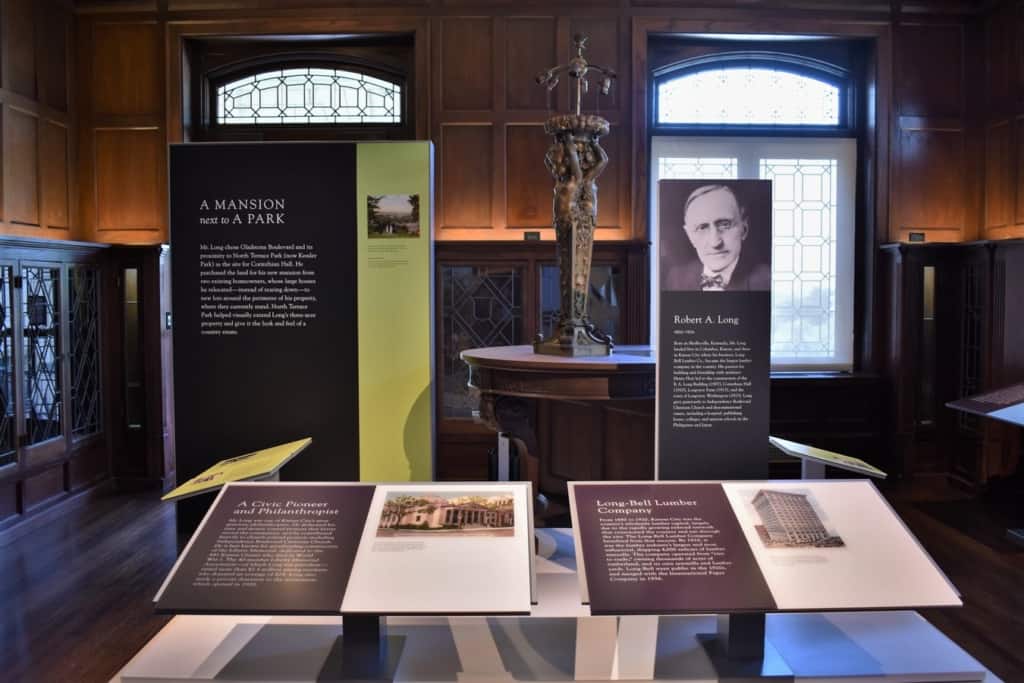
Failure Turned Into Success
I have to wonder how many fortunes were started by accident. Such is the case of Robert Alexander Long. Born into a Kentucky farming family, he moved to Columbus, Kansas in 1873. HIs uncle was a banker, who helped underwrite a series of business failures. One of these was a hay bale business he began with two friends. Finally, his uncle suggested he move farther west, so Robert began selling off the failed hay business. When the sheds were disassembled, he found a strong market for the lumber. This business grew quickly and after one of the partners passed away the two remaining formed the Long-Bell Lumber Company. It was in Columbus where Long met Martha Ellen Wilson, who he affectionately referred to as Ella. She was a Pennsylvania Quaker who was a local schoolteacher. Robert courted her for a year, before the two were married in 1876. The couple had a son, who passed shortly after birth. They also had two daughters, Sally and Loula.
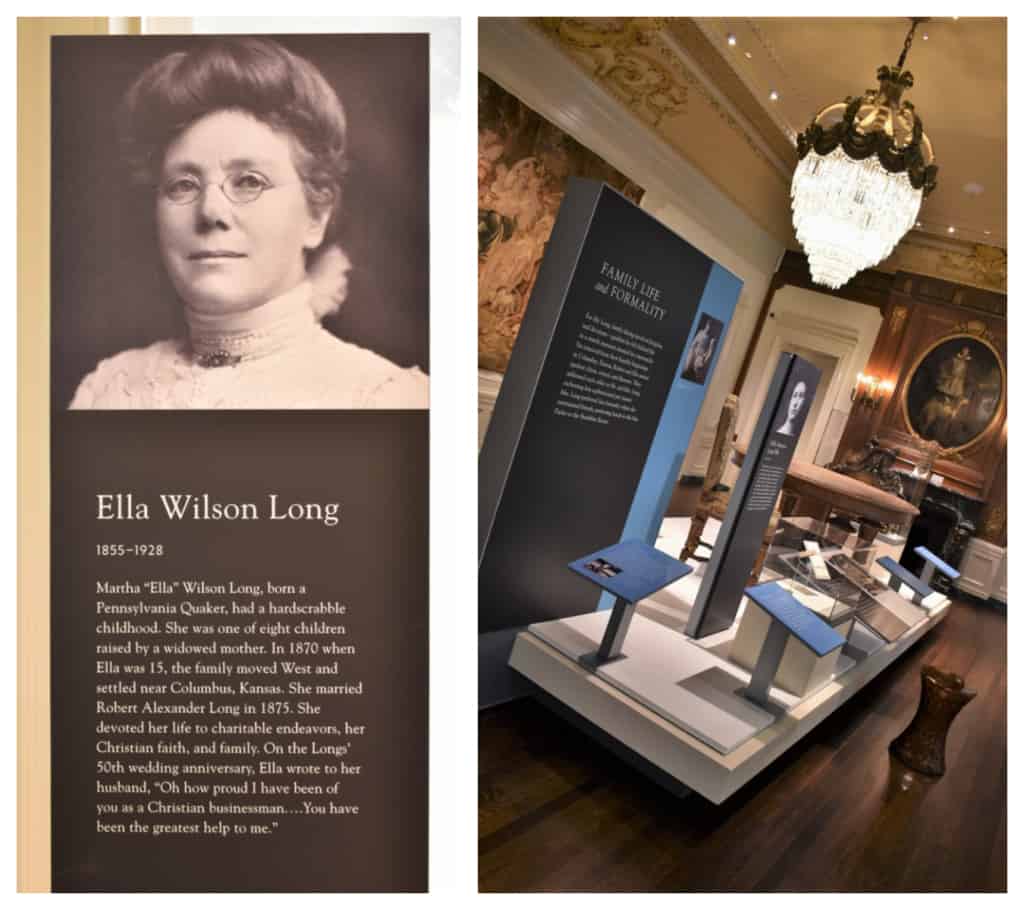
Family Ties
In 1891, the family moved to Kansas City, where his business would have access to more avenues for sales. Western growth relied heavily upon moving supplies along rail lines, and Kansas City was a key point along the journey. By the time that the Long family arrived in their new location, their portfolio included more than 50 lumberyards. Soon after, the Long-Bell Lumber Company would become the largest in the world. The family didn’t sit on their profits, and used them to benefit others. Besides funding libraries and schools, Robert was also a force behind construction of Liberty Memorial and the World War I Museum.
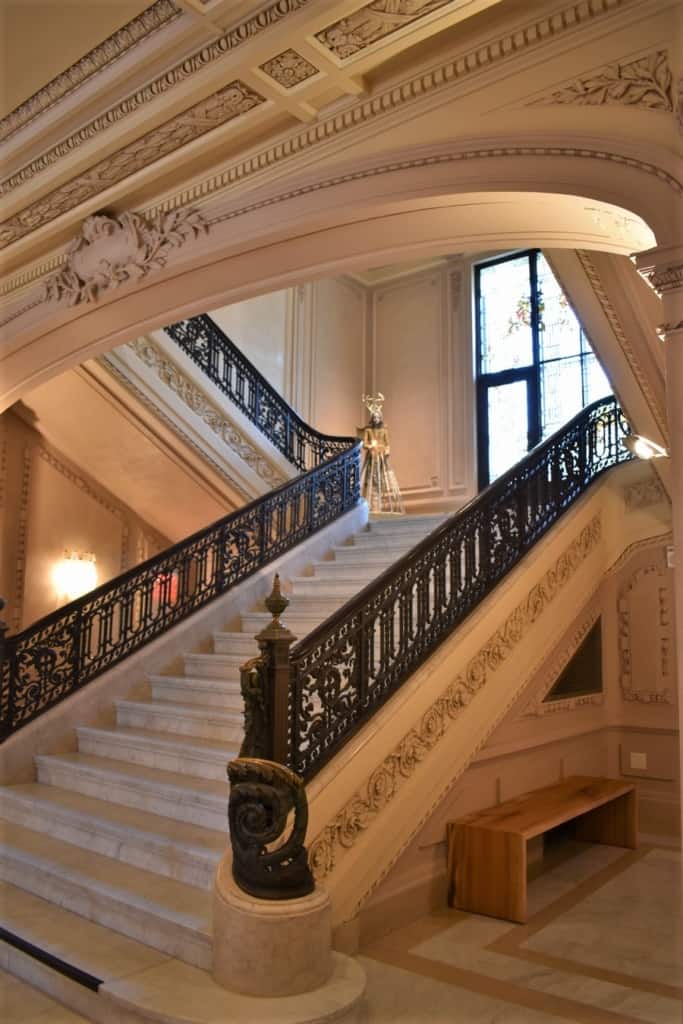
Visiting Corinthian Hall
With all of this success, the Longs decided they needed a home that reflected their prominence. Throughout our many visits to the Kansas City Museum, we had never really grasped the true scope of the Long’s endeavor. The home resides on 3 acres of land overlooking the Missouri River. The four-story mansion gets its name from the Corinthian columns that adorn the entryway, as well as some of the smaller buildings on their property. The home was completed in 1910 at a price of a whopping $1,000,000, which made it the most expensive Kansas City home at that time. It would remain the family home until Robert’s passing in 1934.
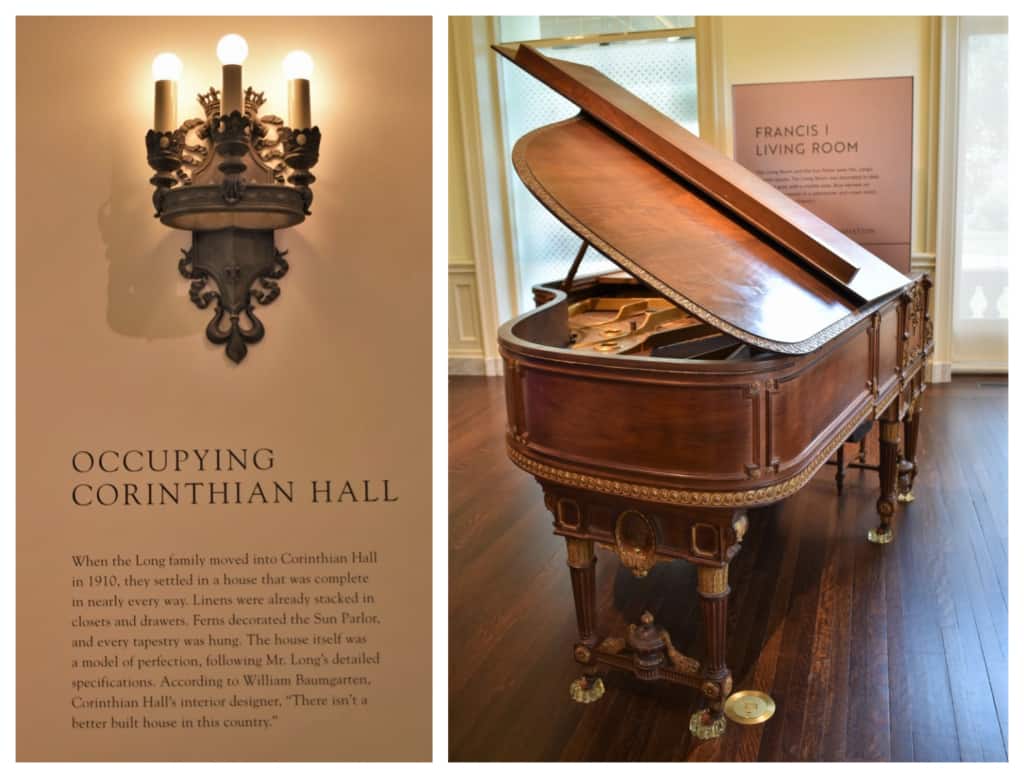
Moving In
While the majestic scale of this home was lost on a child, as an adult I can appreciate its overwhelming presence. The main house has over 20,000 square-feet of livable space. When we entered the recently refurbished house we were greeted by the familiar grand staircase. The first floor has been redesigned to exhibit the story of Corinthian hall and the Long family. In the past, the family part had been mostly absent from the displays. We like that the staff has decided to share more of the background of one of Kansas City’s notable families. It was surprising to read that when the family took up residence in the home, they found it completely stocked for daily use. Wouldn’t that be a nice way to start life in a new home?
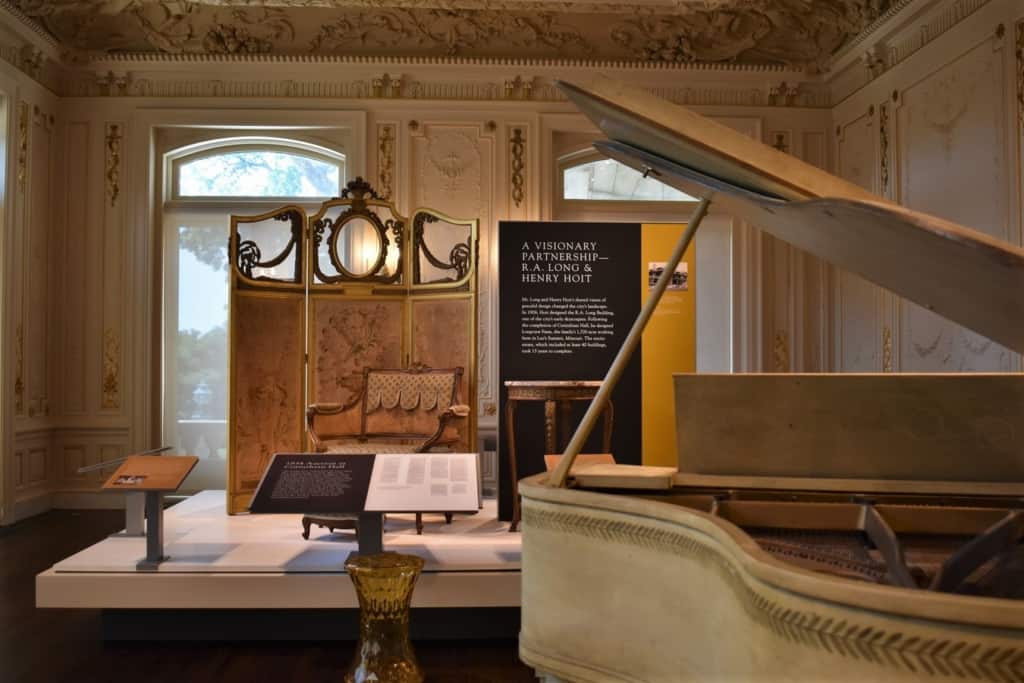
Touring the Home
For decades this majestic building had been home to mineral exhibits and history displays. The hundreds of stuffed animals are nowhere to be seen, as the home has been returned to its original splendor. After their father’s death, the two daughters removed some of the architectural and decorative items for their own homes. Much of the original furniture was sold during an estate auction. In 1939, the sisters donated the property to the Kansas City Museum Association, which repurposed into the history museum that we visited as schoolchildren.
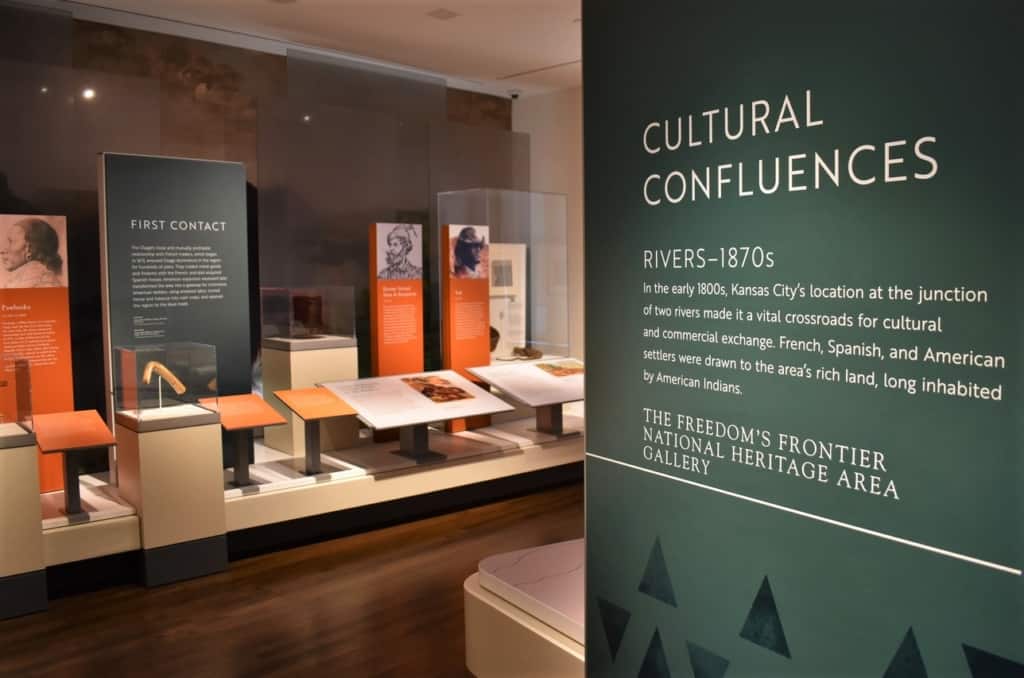
Kansas City History
While our visit to the Kansas City Museum was primarily focused on the home’s original occupants, we couldn’t pass up a visit to the other galleries. Climbing the grand staircase, we made our way to the second floor. This floor has been redesigned to contain the history of Kansas City. It is broken into five galleries with four dedicated to the city’s historical timeline. Since this was our secondary reason for visiting, we will only focus on the earliest portion. This gallery concentrates on the origin of Kansas City and the earliest people who inhabited the lands.
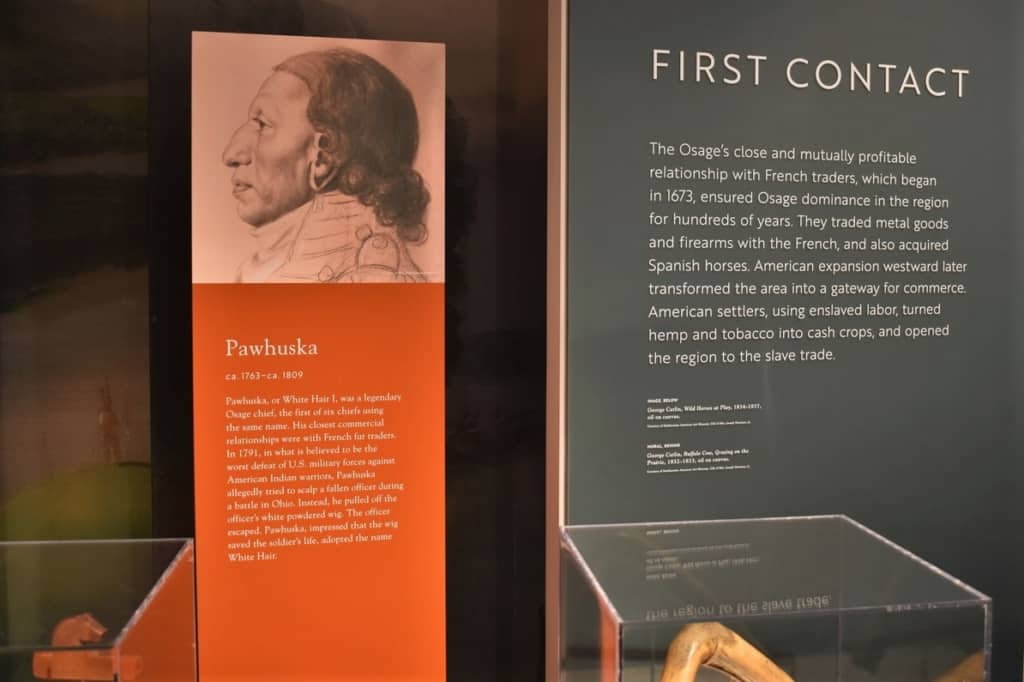
First Inhabitants
If you were to travel back to the late 1600s, you’d discover that the land inhabited primarily by the Osage Nation. They had settled into the river valleys long before any European explorers had set foot in North America. As they migrated westward, they followed the Missouri River to the lands that would one day be Kansas City. The Osage were an impressive people with many adults at or over six-feet tall. The tribe combined hunting and farming to create a well-balanced lifestyle. Spanish and French traders were eager to obtain the pelts in exchange for firearms and other goods. The introduction of horses allowed the Osage to travel farther on hunting trips and raiding parties.
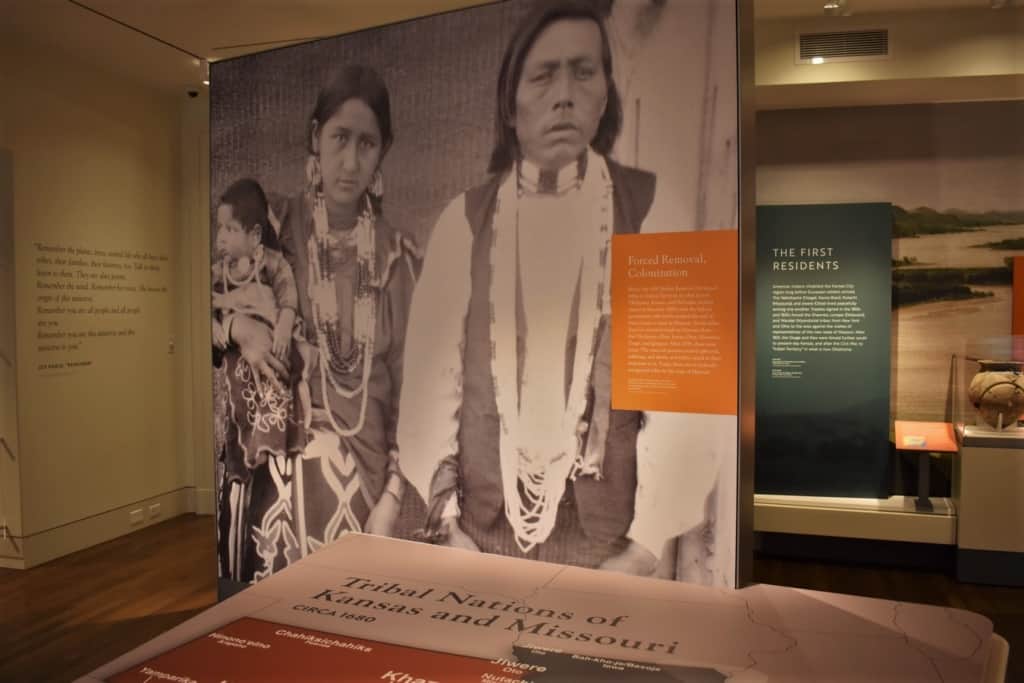
Forced Removal
While the initial interactions focused on trade, the growing number of immigrants led to a clash for the lands of this region. The repeated contact with Europeans also brought new diseases, which took a toll on the tribe’s members. Within a relatively short time, the increased trade altered the lifestyle of the Osage. Metal goods replaced the bone versions that had been tradition for generations. The Louisiana Purchase changed the direction of expansion for the United States. In 1808, the U.S. government negotiated a treaty that allowed the establishment of Fort Osage. It would serve as a trading post for the military and native people. By 1814, the government pressured the Osage to relinquish their ancestral lands and relocate to Kansas and Oklahoma territories.
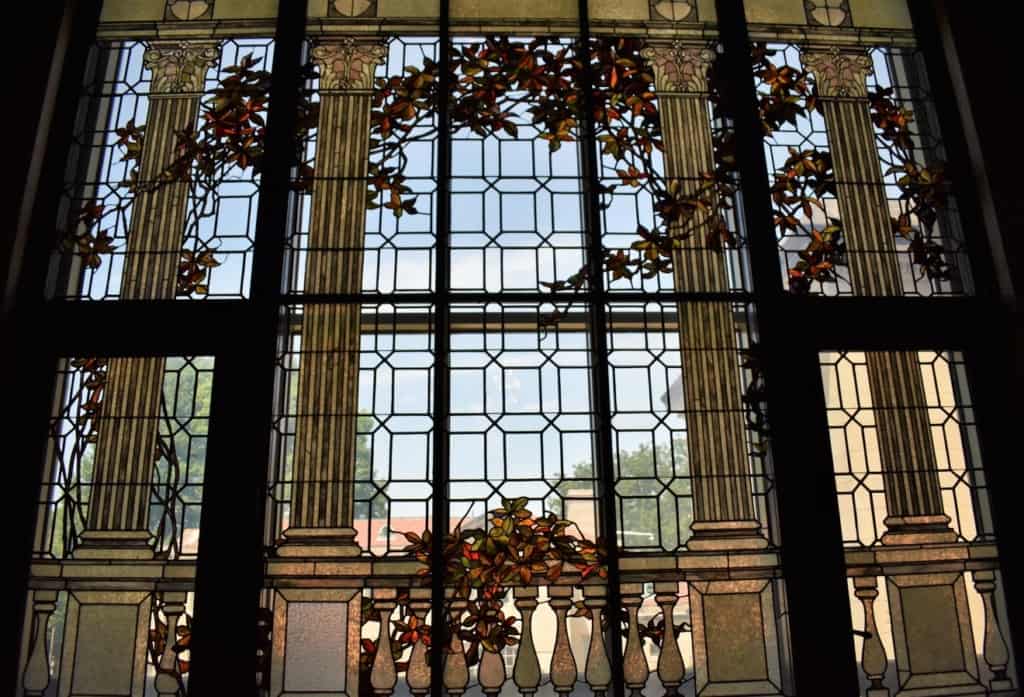
Kansas City Museum
During our visit, we had a moment to speak with a couple of staff members. They were excited to see the home restored to much of its original grandeur, but told us that there are more plans in the works. The soda fountain, which was extremely popular with kids, will return in the next round of renovations. They also have plans for some of the other buildings on the property and we are sure they will be just as amazing. Seeing this historic property revitalized reminds us that telling a story doesn’t have to become stale. The new direction that the staff has taken the Kansas City Museum ensures that generations of schoolchildren will continue to learn about our city’s march to the future.


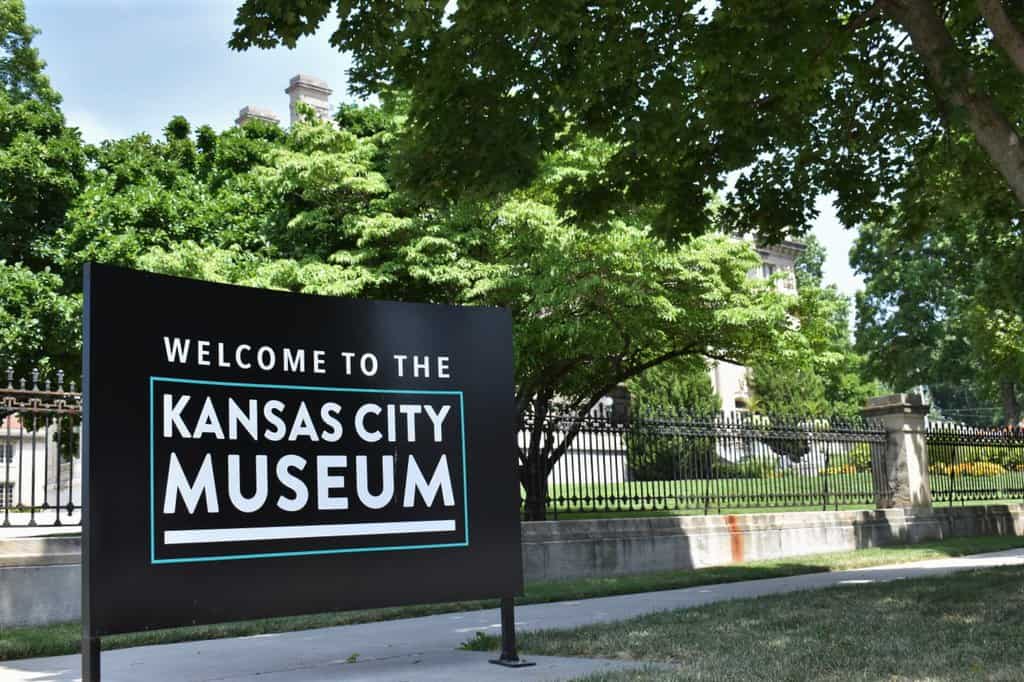
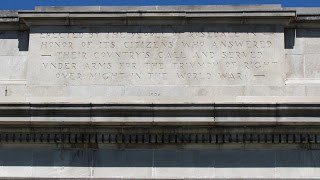
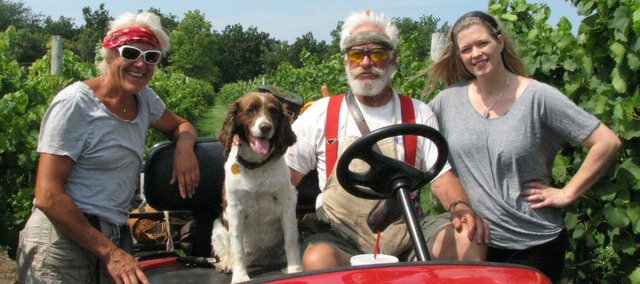

It’s great to see this Kansas City landmark reopen. We will have to make a visit.
We waited a long time for it to return. We are anxious to see the additional changes that are on the horizon.
I never knew about this museum. Looks like a visit is in my future.
We hope you enjoy it.
Our senior adult group visited the Kansas City Museum spring 2022 and were impressed like you were with the remodeling and refocus. I had been in the house / museum several times in the last 30 years, and had become disappointed in its loss of beauty as a home. Thankful to see it restored again and looking forward to what is done with the carriage house, etc. The Longs also have other namesake places – Longview Farms and Longview Lake / Park plus Longview Washington on the Columbia River that was built to house the people who worked for his lumber company.
We had not been to the site in a few years, so like you, we enjoyed the transformation. Can’t wait to see more of the property become transformed.
I’ve not been to the museum since visiting on a grade school field trip in the 1970’s. Now I’m anxious to return and see the “new” museum, as an adult! Great article!
We found it quite a departure from the museum we grew up with but not a bad reformatting.